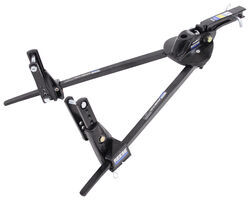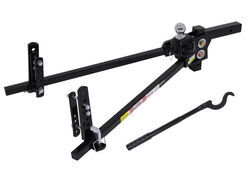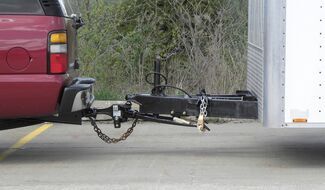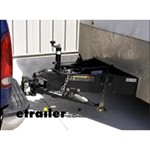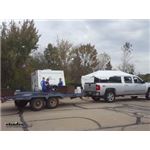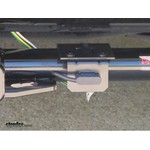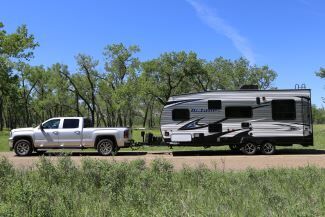
How Does a Weight Distribution System Work
Question:
Hello In this question Jameson C. said a WDH does not increase the trucks tongue weight capacity, but when a WDH is used a different value from another table should be used. That is ver confusing: https://www.etrailer.com/question-180152.html To me it’s very obvious that if you’re using a WDH to distribute weight to the other axles and level the truck, that in fact puts less weight on the hitch itself, thereby reducing the tongue weight. Otherwise it wouldn’t be distributing weight. My question is how much tongue weight does the WDH system transfer to other axles? 10? 20? And my intent is not to exceed my vehicles’ tongue weight limit, I want to know what is the effective or actual tongue weight is so I can buy the proper system for my needs,considering truck bed cargo + tongue weight. Thanks. I have a 1794 Tundra and plan to tow a 7,000lb trailer.
asked by: Gil
Helpful Expert Reply:
The way that weight distribution works is that it uses the tongue weight to put tension on spring bars that essentially then push upward at the ends to better distribute the weight. The tongue weight is still there and only marginally affected. It isn't a huge drop like some people believe. I often use the example of a spring placed between two blocks with a weight hanging from the spring. The weight is always there. The physics aren't exactly the same but that is generally what is going on.
Some hitches and some vehicles will have a separate tongue weight and/or gross trailer weight rating when using weight distribution. This is because the spring bar tension does provide some relief from the weight on the hitch allowing it to reach its maximum potential and is not bearing all the weight of the tongue by itself.
The amount of weight that is redistributed varies based on several factors but the biggest is the amount of tension on the spring bars. So an exact figure is ultimately impossible to nail down across the board because it is different for every set up. With that said you could potentially use a large truck scale to determine tongue weight with and without a weight distribution system hooked up to determine the difference. In my experience it isn't much of a change.
The small change does however show that the system is doing its job and that is just one aspect of what a weight distribution system does. It also offers improved ride quality and stability though those are more or less byproducts of the tongue weight putting tension on the spring bars.
Tongue weight is usually 10 to 15 percent of the gross trailer weight. So a 7K trailer would have a tongue weight around 700 to 1,050 pounds. But then you add in the weight of anything carried behind the rear axle of the tow vehicle because the weight distribution system also has to lift that weight.
So as far as a recommendation for a system that covers the 700 to 1,050 pound range I recommend the Reese Steadi-Flex # RP66560 and 2-5/16 inch ball # 19286. This system has built in sway control included as well. I have included a link to a video review for you. If you find you have a different total tongue weight just let me know and I can make other recommendations.
I have included a link to our help articles on weight distribution and determining tongue weight for you for more information.

Products Referenced in This Question
2-5/16" Hitch Ball - 1-1/4" Diameter x 2-3/4" Long Shank - Chrome - 12,000 lbs
- Trailer Hitch Ball
- Trailer Hitch Ball
- Standard Ball
- Chrome-Plated Steel
- 2-5/16 Inch Diameter Ball
- 2-3/4 Inch Shank Length
- 1-1/4 Inch Diameter Shank
- 12000 lbs GTW
- Class IV
- Class V
- Draw-Tite
more information >
Reese Steadi-Flex Weight Distribution System w/ Sway Control - Trunnion - 12K GTW, 1.2K TW
- Weight Distribution Hitch
- WD With Sway Control
- Some Sway
- Includes Shank
- Electric Brake Compatible
- Surge Brake Compatible
- Fits 2 Inch Hitch
- Allows Backing Up
- 1000 lbs
- 1100 lbs
- 700 lbs
- 800 lbs
- 900 lbs
- Reese
more information >
Product Page this Question was Asked From
Equal-i-zer Weight Distribution System w/ 4-Point Sway Control - 12,000 lbs GTW, 1,200 lbs TW
- Weight Distribution Hitch
- WD With Sway Control
- Some Sway
- Includes Shank
- Electric Brake Compatible
- Surge Brake Compatible
- Fits 2 Inch Hitch
- Allows Backing Up
- 1000 lbs
- 1100 lbs
- Equal-i-zer
more information >
Featured Help Information
Instructions
Miscellaneous Media

Continue Researching
- Shop: Brake Controller
- Shop: Fastway e2 Weight Distribution w/ 2-Point Sway Control - Trunnion - 6,000 lbs GTW, 600 lbs TW
- Article: 5 Tips to Confidently Choose Your Weight Distribution Hitch
- Article: 2 Steps for Finding the Right Weight Distribution Hitch Size
- Video: Review of Blue Ox Weight Distribution Hitch - 6K WD With Sway Control - BLU36FR
- Q&A: Recommended Weight Distribution System for a Trailer w/ Different Weights
- Q&A: Recommended Weight Distribution System for 5,000 Pound Trailer
- Q&A: What is the Weight of the Head of FastWay Weight Distribution FA92-00-0800
- Q&A: Length and Weight of Hitch Head Assembly For Fastway e2 Weight Distribution # FA94-00-0800
- Shop: Towing Mirrors
- Shop: Fastway e2 Weight Distribution w/ 2-Point Sway Control - Trunnion - 8,000 lbs GTW, 800 lbs TW
- Shop: Tekonsha Prodigy RF Wireless Brake Controller - Trailer Mount w Remote - 1 to 3 Axles - Proportional
- Shop: Fastway e2 Weight Distribution w/ 2-Point Sway Control - Round - 8,000 lbs GTW, 800 lbs TW
- Shop: HitchGrip Carrying Tool for Weight Distribution Head Assembly with 2-5/16" Ball
- Shop: Blue Ox TrackPro Weight Distribution w/ Sway Control - 7-Hole Shank - 6K GTW, 600 lbs TW
- Shop: Curt TruTrack Weight Distribution System w/ Sway Control - Trunnion - 8,000 lbs GTW, 800 lbs TW
- Q&A: What is the Difference Between a Class II and a Class III Hitch?
- Shop: Trailer Hitch
- Search Results: trailer brake controller
- Article: Brake Controller 7- and 4-Way Installation Kit (ETBC7)
- Video: Choosing the Right Trailer Wiring
- Shop: Trailer Wiring
- Search Results: brake controller
- Article: 5 Things to Know About Weight Distribution Hitches
- Q&A: What is the Difference Between a 4-Way and 7-Way Trailer Connector
- Search Results: weight distribution hitch
- Q&A: What is the Difference Between the Tekonsha Prodigy P2 and the P3 Brake Controllers
- Article: Trailer Wiring Diagrams
- Shop: Suspension Enhancement
- Search Results: etbc7






